The tsar's love could have been a lottery win or a curse for his chosen one. It brought power and wealth or humiliation and cruel death. The favor of the gentlemen in the Kremlin was inconsistent, and their tastes and preferences - often, to put it mildly, controversial.
1. Maryna Mniszchówna - the tragic tsarina of two pretenders
On June 20, 1605, there was great joy in the streets of Moscow - here came back the son of Ivan IV, who was considered dead, Dmitri. The inhabitants, however, quickly cooled down. His great retinue was swarming with Poles, Catholics and Lutherans, whom the Russians hated almost as much as the pagans from the steppes . Moreover, Dimitri got along with the Mniszech family, promising that if he became tsar, he would marry the beautiful Maryna.
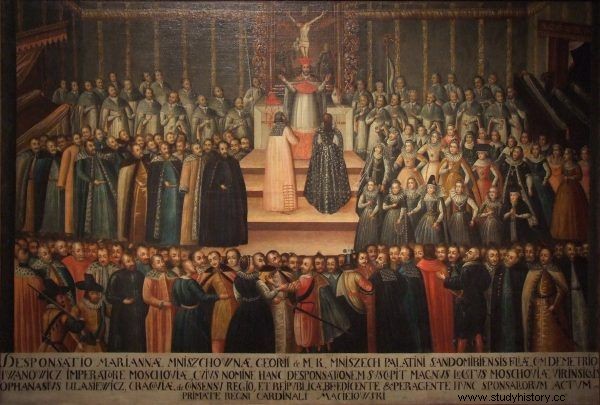
Per procura marriages of Maryna Mniszchówna in Krakow were full of splendor. The girl, however, was in no hurry to see her husband in Moscow ... (photo:Shakko, license CC BY-SA 3.0).
In November 1605, a wedding took place in Krakow, at which the tsar was represented by a representative. Maryna was in no hurry to see her husband - it was winter and the trip to Russia was not the most pleasant one. Together with her father and numerous entourage, she set off only in March and at the end of April they reached the walls of the Kremlin. Maryna was the first woman in Russian history to be crowned Tsaritsa.
Soon after, there were weddings in the Orthodox rite, and Maryna became a Maria. However, it did not enjoy the tsarist crown for long. Dmitri died in his own palace in 1606, escaping through a window from a rabid mob . As a result of the revolt, the Moscow masses killed several hundred Poles and Lithuanians who came to the capital for the coronation and wedding ceremonies of Maryna Mniszchówna.

Beautiful Maryna Mniszchówna in the painting from Wiśniowiec (photo:Tomasz Leśniowski, license CC BY-SA 3.0).
According to the legend, the self-proclaimed body buried outside the city was burnt so that his spirit would not frighten the inhabitants, and the ashes were fired from the cannon towards Poland, from where he came . Maryna managed to avoid a terrible fate - first she hid under the skirts of a wardrobe and then in her father's house.
Interestingly, she became the wife of another fake Dimitri, in which she publicly recognized her miraculously saved husband . At his side, she complained to the Polish king about a life worse than that of a slave: Coming from the Polish nobility, elevated to the Moscow throne, and then thrown from him, I fell into the worst slavery. In another letter, she wrote that she had to flee to avoid even worse poverty and humiliation .
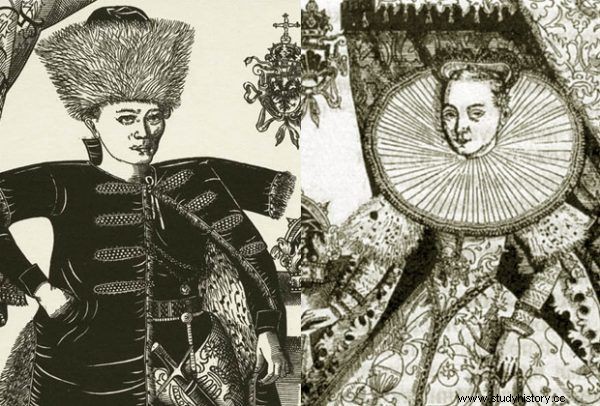
In this figure, Maryna appears with her first husband. It was established at the time of her greatest glory as Tsarina of Russia (source:public domain).
A few years later she was taken prisoner and imprisoned with her three-year-old son. However, this was not the end of her suffering - the child was strangled and hanged at the Kremlin gate . This cruel death cast a shadow on the Romanov dynasty. And although we do not know what end happened to Maryna (perhaps she was also murdered), it led to the birth of the prophecy about the bloody end of a dynasty born of bloodshed .
2. The proud tsarist Agata Gruszecka
Fedor Alekseevich was only fourteen years old when he ascended the throne of a powerful state. On June 18, 1676, he was crowned Tsar of "Great, Little and White Rus." At first, Fyodor was influenced by the opposing court coteries, which led to his marriage with the Polish woman Agafia (Agata) Siemienowna Gruszecka.

Fyodor and Agata are depicted together in an icon from 1681 (photo:Shakko, license CC BY-SA 3.0).
Agafia Siemionowna was the daughter of a Cherkassian courtier, Siemion Fiodorowicz Gruszecki. She was called "the unknown girl of the people", and the tsar saw her at a solemn procession and wanted to meet her . A formality was the later, according to tradition, "screening of the candidates" - Fyodor already knew who he would take as his wife.
Meanwhile, another faction decided to thwart the Tsar's plans and spread slander against the chosen one. She was said to have been born to an unknown mother in a military camp. Fyodor took these lies deeply. He became so upset that he would not admit anyone, he prayed alone, he did not eat or sleep. Fortunately, the monsters were exposed and the wedding and coronation ceremony took place on June 18, 1680.
This article has more than one page. Please select another one below to continue reading.Attention! You are not on the first page of the article. If you want to read from the beginning click here.

After Agata's death, Fyodor - whether he wanted it or not - had to remarry. His chosen one was the boyar daughter Marfa Apraksina (source:public domain).
Agafia proved to be a firm woman with a strong character. She fought slander about herself, threatened slanderers with scaffolding, appealed to ignore rumors. It was her tsarist court that also owed the popularization of Polish fashion and customs . Unfortunately, Fyodor and Agata were briefly happy in marriage, as the relationship lasted only a year. Tsarova gave birth to a son named Ilya and died three days later as a result of maternal fever. The boy did not survive either.
3. Marta Skowrońska - a peasant woman on the Russian throne
The first wife of Peter the Great was Eudoxia Lopukhina, but the tsar quickly abandoned her and later sent her to a monastery in Suzdal. In the meantime, he had a lover. The tsar's personal physician claimed that the tsar had in his body a whole legion of devils, urging him to enjoy pleasure .

Piotr had many lovers, but it was only a robust peasant from Rzeczpospolita that turned his head so that others fell into the shadows. Marta (already known as Katarzyna) at the age of about 30 (source:public domain).
Piotr's lover was the daughter of a Lithuanian peasant, Samuel Skowroński, Marta, born in 1684, whom he met at the court of his favorite Mienszyków. When he first met her, he exchanged a few words with her and finally stated that when he lay down, she was to bring the candlestick to his room. With Mienszyk's permission, Marta spent the night with the Tsar.
Later, the two shared a mistress who, to put it mildly, was not considered a classic beauty. Squat, with prominent breasts and thick thighs, a short neck and a round face with bulging eyes and an upturned nose. She was illiterate, liked to drink and have a good time. However, she charmed the tsar with strength, health and serenity, fully meeting his erotic and aesthetic requirements. She was cordial and courageous, always smiling, she accompanied the Tsar on his military expeditions, talking to soldiers and offering them vodka.
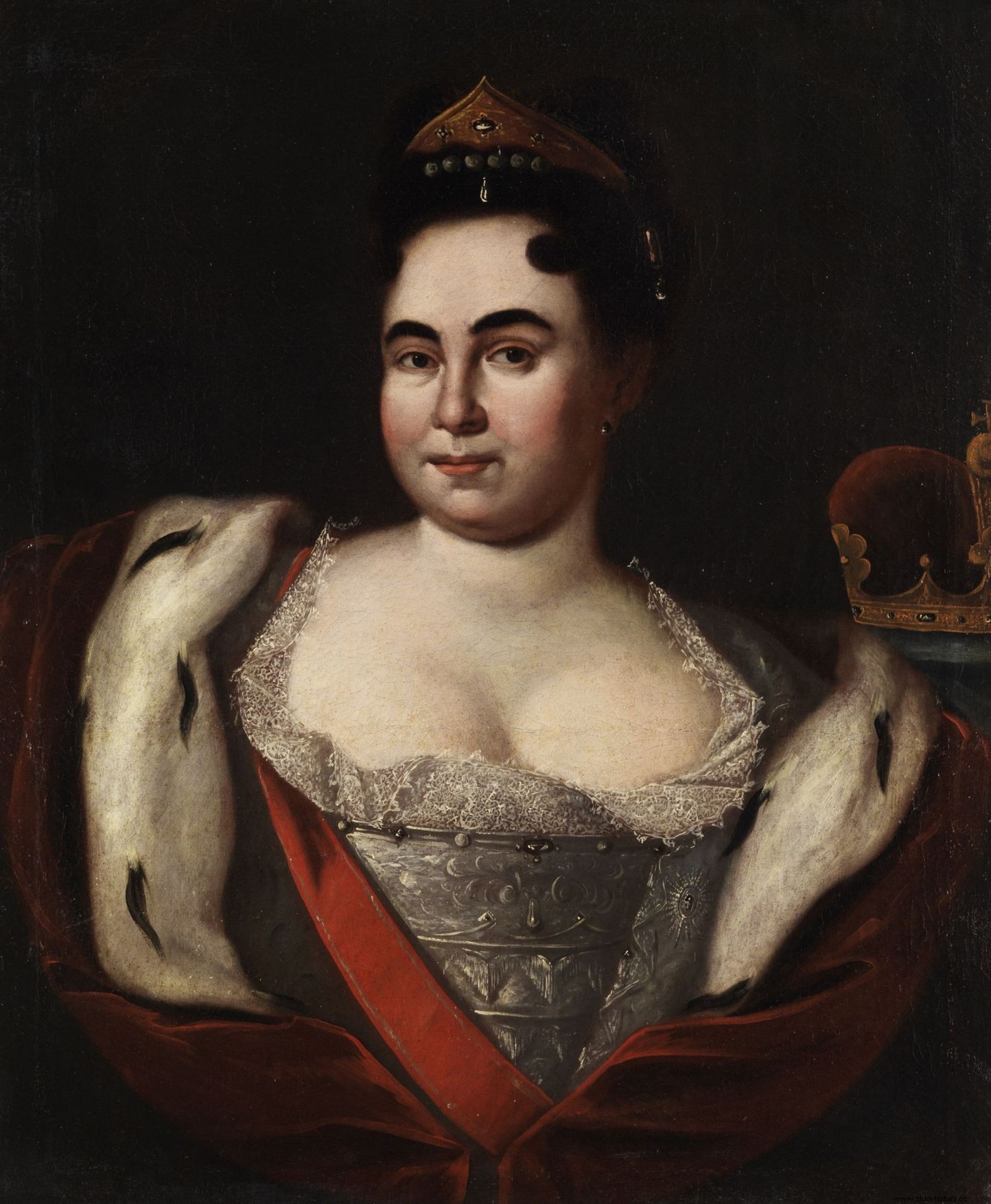
Catherine was not a classic beauty, but she liked to laugh and did not pour her collar. It pleased Piotr in every way (source:public domain).
A secret wedding took place in 1707 or 1711, and in the spring of 1712 she was publicly proclaimed a tsarist as Catherine Alekseevna Mikhailovna . Even as the tsar's mistress, she lived in splendor, wearing expensive robes and surrounded herself with luxury. The Tsar loved her so much that he consulted her in matters of state and he treated her with great tenderness and adoration. Only she was able to soothe his anger, often saving the victim of tsarist anger from beating and even torment.
During an alcoholic libation with the words: Batiuszka, time to go home announced the end of the party, and she cradled a headache like a baby to her breast. In his letters, he affectionately called her Catherine, the best friend and she called the tsar "captain" and "loving father."
This article has more than one page. Please select another one below to continue reading.Attention! You are not on the first page of the article. If you want to read from the beginning click here.

Katarzyna on the threshold of her independent rule. Portrait by Heinrich Buchholz (source:public domain).
She bore him eleven children, with whom only two survived:Anna, the future Duchess of Holstein-Gottorp, and Elizabeth, the future Tsarina of Russia. Despite their mutual affection, they both did not shy away from romances , and Piotr was extremely jealous of his wife's lovers. He once sent a favorite's head off to her private apartments , Wilhelm Mons, moreover the brother of his own former lover, Anna Mons.
When Piotr was dying in her arms, Catherine was sobbing on her knees, asking God to open paradise and accept his great soul . After his death, she took the throne, despite the mockery of low origin . Her reign ushered in a long period of palace coups known as the "women's war" or the "kingdom of women."
4. The official illegitimate wife of Maria Czetwertyńska
Alexander I sat on the throne after his murdered (and not without his indirect participation) father. When he took power, he had been married for many years. As a sixteen-year-old he married two years younger Princess Ludwika of Baden, who adopted the Orthodox Church and became known as Elizabeth Alekseevna.
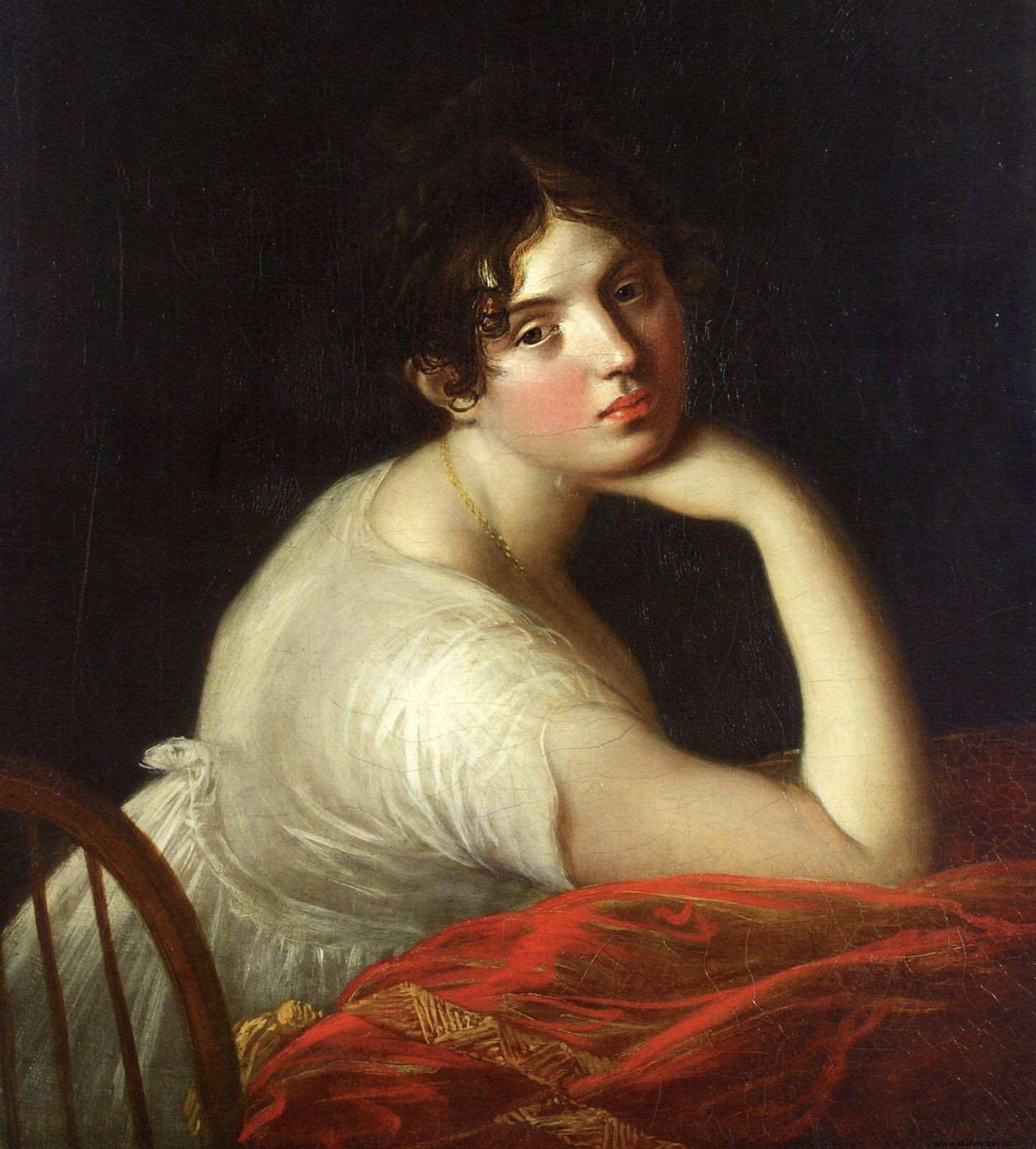
The woman who made the Tsar forget about his beautiful wife. Maria Czetwertyńska in the painting by Salvatore Toncia (source:public domain).
A beautiful and kind wife did not receive warm feelings from her husband. Alexander considered his lover to be more attractive than Elżbieta - Princess Maria Naryshkin, daughter of Antoni Czetwertyński of Targowicz.
The romance with Maria Czetwertyńska, who was then the wife of Prince Dmitry Naryshkin, began in 1803 and lasted over a decade and a half. Maria was not happy with her husband, who was fifteen years her senior, and married him at the age of sixteen. She was reportedly unusually beautiful, and it was her beauty that drew Alexander's attention even before he took the throne. He saw her at one of the balls during the folk festival of Maslenitsa and wanted to win .
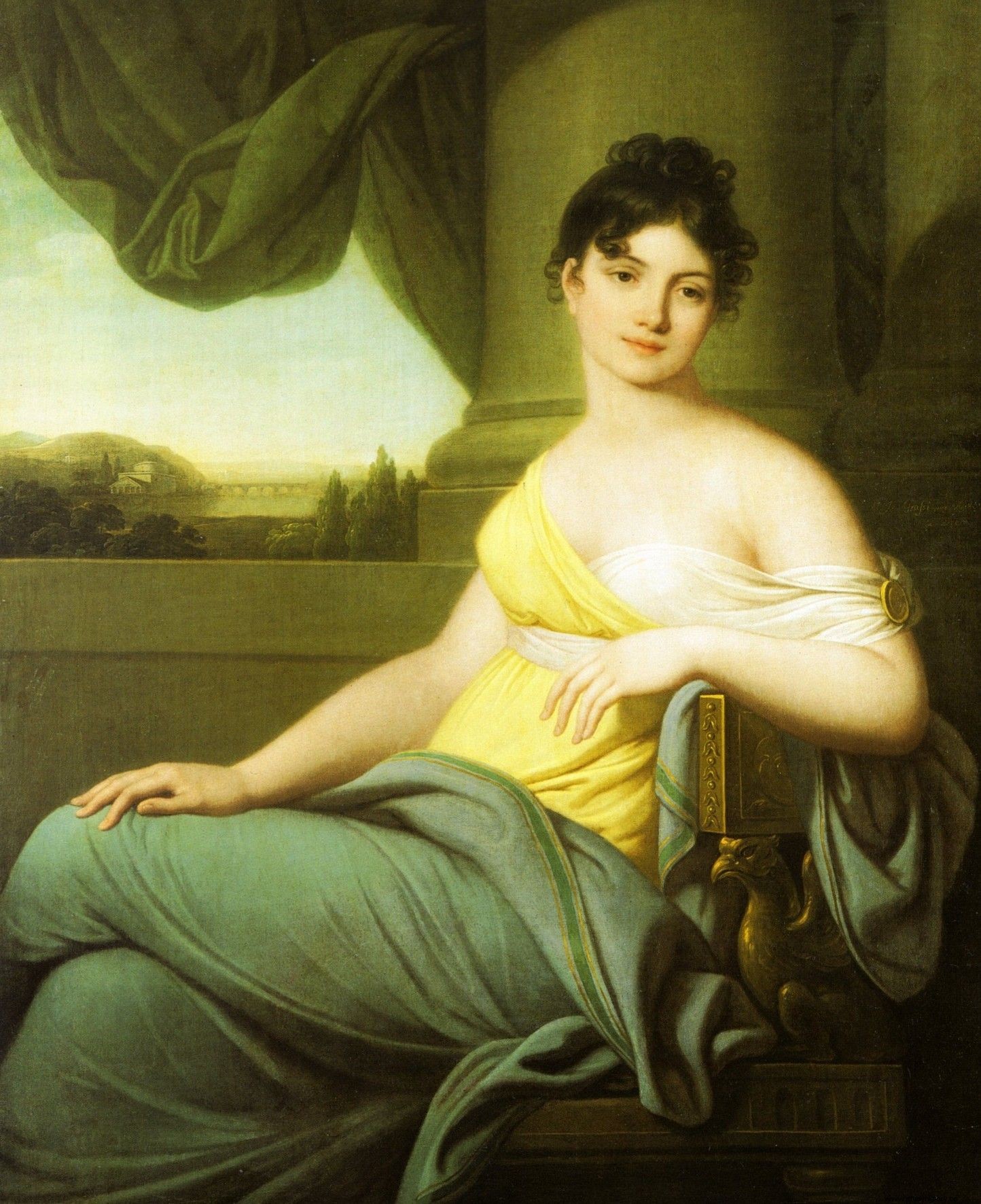
Polish favorite of Tsar Alexander I in the painting by Josef Maria Grassi (source:public domain).
She used to appear in provocative outfits at balls and she danced wonderfully, and played her favorite melodies on the harpsichord to Aleksander who adored her. She was also intelligent, had her own opinion on various topics, setting the tone for the conversations held behind the scenes . Moreover, she was a big-hearted person - she generously donated her family fortune to charity.
The feeling engulfed Aleksander completely, and all obstacles intensified his enthusiasm. He saw in Naryshkin a dazzling ideal, the opposite of his wife. He gave her a luxurious apartment, surrounded her with splendor, which she liked to use. They were officially showing themselves as a married couple , including at the Congress of Vienna, and his lover bore him at least three children, including beloved by Tsar Sophia, who died at the age of seventeen.
This article has more than one page. Please select another one below to continue reading.Attention! You are not on the first page of the article. If you want to read from the beginning click here.
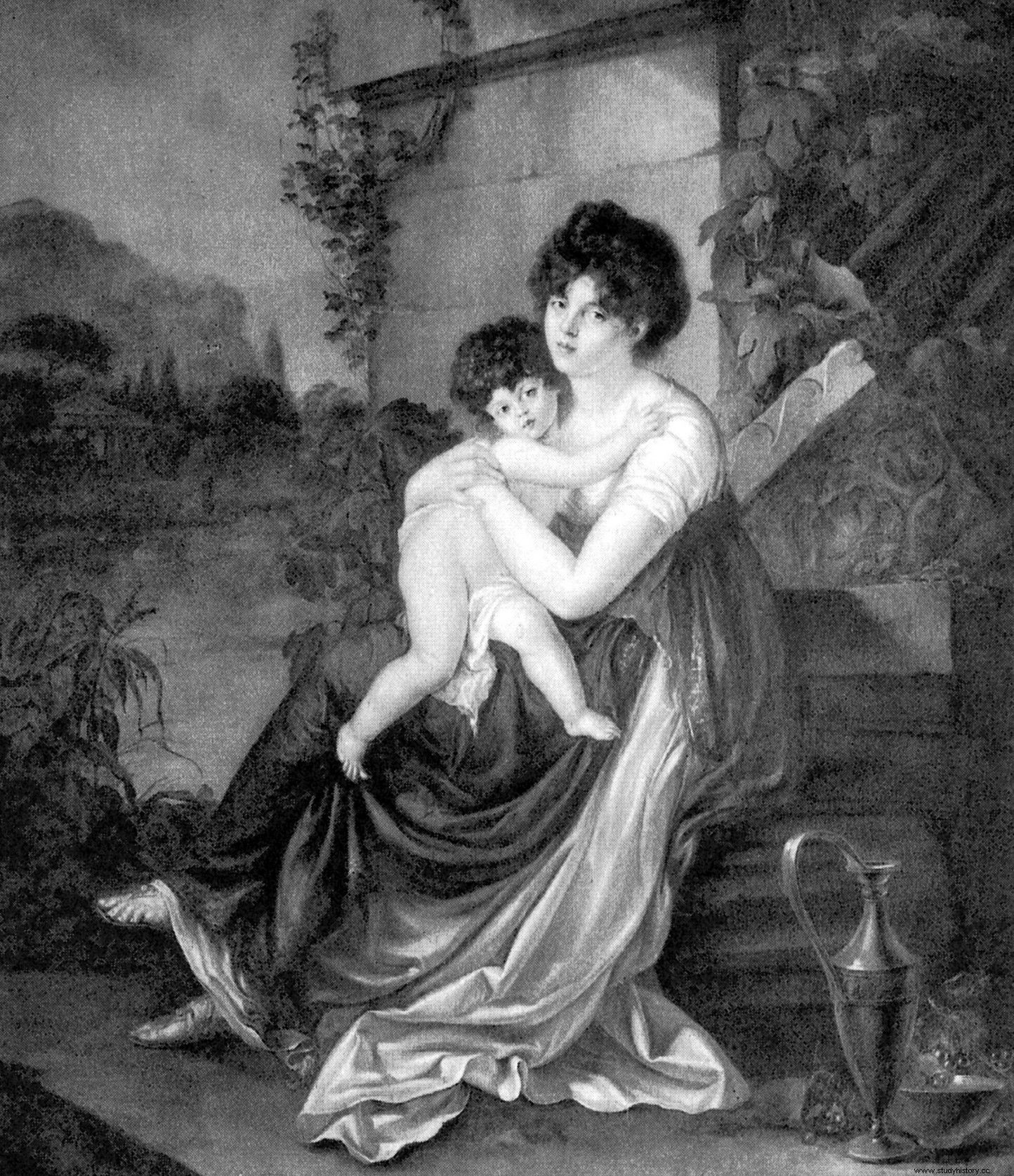
Maria Naryshkin, née Czetwertyński, with one of her children in an illustration based on a painting by Peter Edward Stroehling (source:public domain).
The tsar was famous for his fleeting love affairs, but Maria did not owe him. In revenge for his numerous betrayals, she again seduced the tsarist adjutant, General Adam Ożarowski, but was not punished. When Alexander caught her in flagranti with his lover at the Naryshkin Palace in Peterhof, he also forgave him. The general who was hiding in the closet, reached by the ear and told him: Your shame is my bloody revenge .
5. Matylda Krzesińska - three Romanov prima ballerina
The future Nicholas II, as heir to the throne, did not stand out with anything, and wasted his time on entertainment and revelations. He knew all the brothels in St. Petersburg very well. After the tragic death of his grandfather, the whole family lived in fear of the attack, and his mother constantly kept Mikołaj with her. Apparently, he was influenced so much that even the romance with Matylda Krzesińska, the prima ballerina of the Mariinsky Theater in St. Petersburg, took place with the consent of her parents.

Mikołaj was passionate about the Polish prima ballerina, but before she became his lover, he politely asked her parents for permission. Matylda Krzesińska in a Spanish dancer costume in a photo from 1897 (source:public domain).
Krzesińska danced there with Wacław Niżyński, making an impression on Piotr Czajkowski himself. As the first lady of Russian ballet, she led a fashionable and lavish life, establishing numerous romances with influential men. The relationship between the tsarevich and the dancer caused a great deal of criticism, and Nicholas lost his head for her.
The romance lasted until the then 21-year-old Mikołaj met the 17-year-old daughter of the Grand Duke of Hesse, Louis IV. Mikołaj ended his affair without regret and married Alicja Hessen-Darmstadt, whom he affectionately called "Alix". The tsarevich finally matured and ended his riotous lifestyle once and for all.

This time Matylda poses coquettishly on a postcard from the turn of 1898 and 1899 in a costume from the ballet "La Esmeralda" (source:public domain).
And Matilda? It was "taken over" by Grand Duke Sergei Mikhailovich, who had previously married ... Alix's sister. He was not the last Romanov in the life of the prima ballerina:in 1900 Matylda seduced Grand Duke Andrzej, 7 years her junior. When she gave birth to a son two years later, the two princes argued over paternity. They both showered her with expensive gifts, bought estates and the most expensive jewelry.
During the Bolshevik revolution, Sergiusz died, and Matilda, along with Andrzej and her son, fled to France. They got married and lived happily for many years. Matylda died in 1971 at the age of 99. There is an inscription on the Matilda's monument:.
